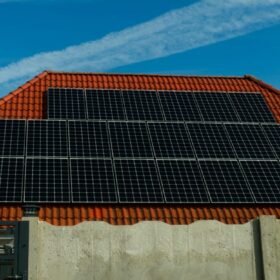The Hydrogen Stream: Adnoc delivers low-carbon ammonia to Japan
Adnoc has delivered the world’s first certified bulk commercial shipment of low-carbon ammonia to a client in Japan, while Plug Power has agreed to supply a 3 GW electrolyzer in Australia.
Netherlands to phase out net-metering scheme in 2027
The new government coalition in the Netherlands says the nation’s current net-metering scheme will be maintained until the end of 2026. The previous Parliament had rejected a proposal to cancel the scheme by the end of 2025.
The Hydrogen Stream: PosHYdon starts testing offshore gas-green hydrogen
PosHYdon says it wants to validate the integration of three energy systems in the Dutch North Sea: offshore wind, offshore gas, and offshore hydrogen. The project will involve the installation of a hydrogen plant on the Neptune Energy (Eni) Q13a-A platform.
Netherlands approves grid fees for rooftop PV system owners
The competition regulator in the Netherlands says that the grid fees that big energy suppliers are applying to PV system owners are legitimate. Solar customers currently pay between €100 ($107) and €697, depending on the system size.
The Hydrogen Stream: US government targets $2/kg by 2026, $1/kg by 2031
The US Department of Energy says it is aiming for “clean” hydrogen production costs of $2/kg by 2026 and $1/kg by 2031.
Ardagh group adopts solar at packaging manufacturing plants in Europe
Luxembourg-based Ardagh Group is installing solar PV at several of its packaging manufacturing sites in the United Kingdom and Europe. The latest is a 1.75 MW rooftop system installed at a glass packaging facility in Irvine, Scotland.
The Hydrogen Stream: Norway to make world’s biggest hydrogen ships
Norwegian Ship Design Co. has agreed to help build what it claims will be the two largest hydrogen ships in the world, while Norwegian Hydrogen has announced plans to team up with Australia’s Provaris Energy on hydrogen export opportunities.
TU Delft presents 21.14%-efficient IBC-HJT solar cell based on molybdenum oxide hole collector
Researchers at the Delft University of Technology have fabricated an interdigitated back contact and heterojunction solar cell that uses a thin full-area molybdenum oxide layer as a blanket layer. The device reportedly ensures well-passivated gaps between electron and hole collecting regions.
Solarge plans 500 MW BIPV module factory
Dutch module manufacturer Solarge has raised €3 million venture capital from new and existing investors to expand its recently opened facility where it produces lightweight, low carbon, panels for commercial and industrial rooftops.
Solar forecasting based on all sky imaging, long short-term memory
A Dutch research team have developed a solar radiation forecasting model that uses the long short-term memory (LSTM) technique. The proposed methodology reportedly achieves better results than other forecasting approaches.










